The Halloween Country: October Thoughts Occasioned by Ray Bradbury
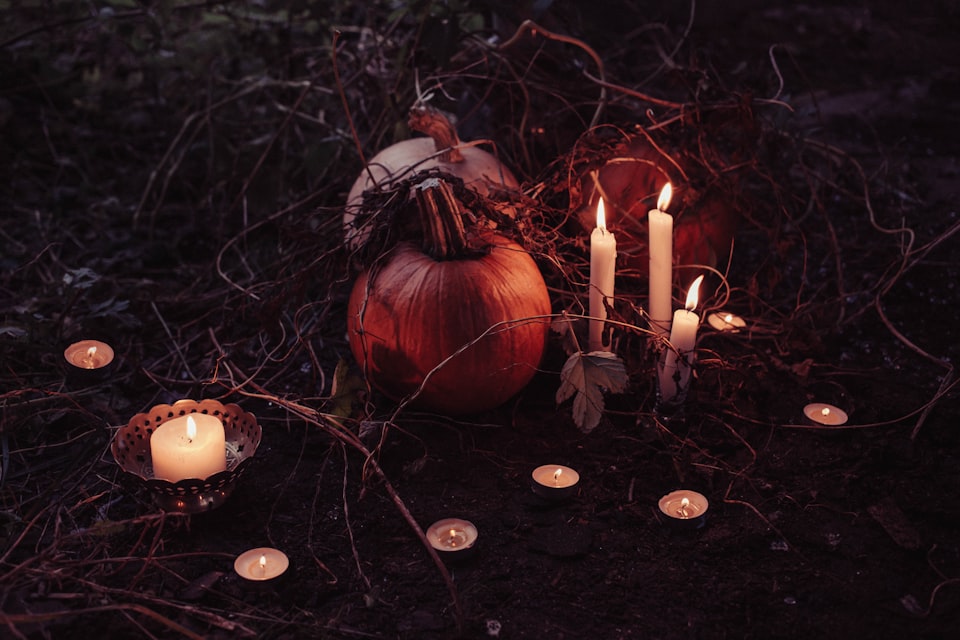
October always gets me thinking about Ray Bradbury. The inaugural quote from The October Country was seared into my autumnal consciousness years ago, and I like to return to it—and his work as a whole—around Halloween. It reads:
That country where it is always turning late in the year. That country where the hills are fog and the rivers are mist; where noons go quickly, dusks and twilights linger, and midnights stay. That country composed in the main of cellars, sub-cellars, coal-bins, closets, attics, and pantries faced away from the sun. That country whose people are autumn people, thinking only autumn thoughts. Whose people passing at night on the empty walks sound like rain.
His poetic and impressionistic style—unusual for science fiction writers—is so effective because he draws on concrete things (light, cabinets, pavement) in order to conjure up the holistic feeling of a season or a time period. There is magic to his prose and boundless imagination to his stories.
Bradbury had a big impact on me when I was a teenager (which is a good time to read him). Fahrenheit 451 was the first book I was assigned in school that I really enjoyed. There were books I had liked outside of class, of course, but never ones I had been commanded to read by teachers. As much as I love to read now, I think even I would admit slogging through classics like The Scarlet Letter or Jane Eyre at age 16 isn’t a winning recipe for teachers.
But Bradbury was different. I wanted to keep reading. I even saw him in person once, when my parents took me to the LA Times Book Festival held at UCLA, and he gave a lecture (fittingly, given he wrote Fahrenheit in the basement of the Powell Library, on a pay-as-you-go typewriter). I have two autographed books from him: The Martian Chronicles and From the Dust Returned. Given his advanced age at the time, he fell asleep during the book signing, so I didn’t get a chance to talk to him.
C.S. Lewis (who also liked Bradbury’s writing) commented that George MacDonald had baptized his imagination and Chesterton had baptized his intellect. I think I would have to say, all things being equal, Lewis himself bears an indelible stamp on my intellect, but that it’s Bradbury who had the biggest impact on my imagination.
Though mostly remembered as a sci-fi writer, Bradbury actually rejected the label. Only Fahrenheit 451 was really sci-fi, in his view, the rest of his work varied from different genres. His early writing, especially those stories from The October Country, The Illustrated Man, and The Martian Chronicles are more properly considered horror or space fantasy than anything else.
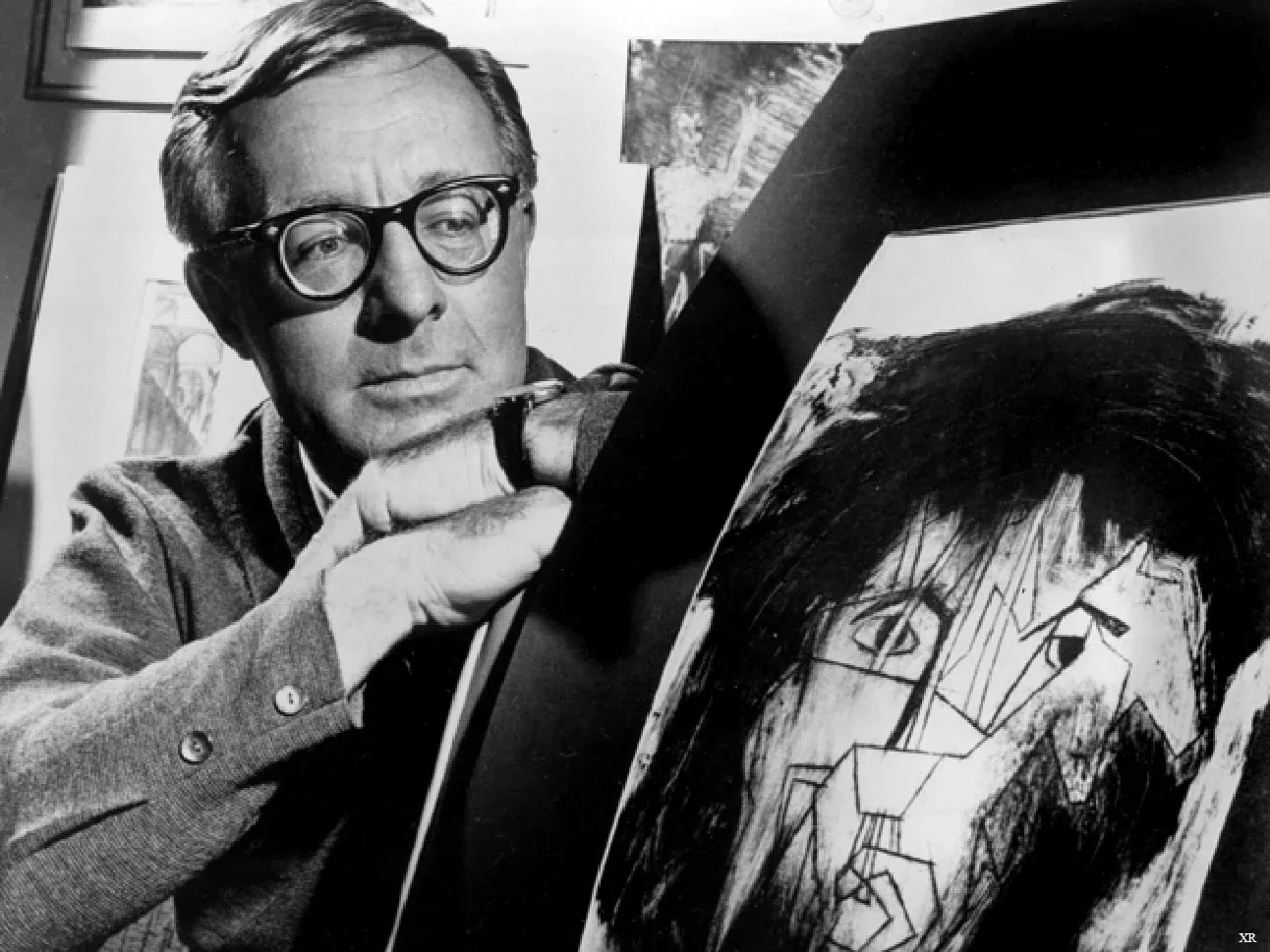
Master of Halloween Horror
His stories—and their haunting imagery—stay with you long after you read them. Who could forget the incessant, pounding, maddening rain on Venus from “The Long Rain”? Or the two children standing in the virtual savanna in “The Veldt”? Or the crushed butterfly underneath the boot in “A Sound of Thunder”? Or the off-screen movement of the killer in “The Small Assassin”? Or the scorched silhouettes on the side of the smart house in “There Will Come Soft Rains”?
When it comes to October, though, there is one book that stands out—and tall—from the others, Something Wicked This Way Comes. So much of Bradbury’s work evokes a sense of nostalgia, a longing for childhood: those lost, Edenic memories of playing ball in the streets, adventuring in the woods, and that rapidly vanishing feeling that the future is open and time is infinite.
This book, along with Dandelion Wine, evokes this sense as strongly as any book could, though Something Wicked is more of a horror story than its companion. The two boys, Jim Nightshade and Will Halloway, born on either side of midnight October 31, experience the holiday early when a strange carnival led by the villainous Mr. Dark arrives in town.
One of the central conceits of the story is a merry-go-round that can either advance or reverse time. Like his other stories, it has its own unforgettable imagery, like that of the carousel playing Chopin’s Funeral March backwards as it de-ages its rider. The carousel lures the boys with the utopian vision to which all children are susceptible: of leaping into the future, of being instantly grown-up and able to do whatever they want without constantly being thwarted by meddling parents.
And yet, simultaneously, its reciprocal promise of the recovery of youth tempts Will’s father Charles, who is feeling the pressure of time more and more as he ages, seeing his wife’s body as a reminder of mortality and a hope for resurrection—“Oh, what strange wonderful clocks women are. They nest in Time. They make the flesh that holds fast and binds eternity”—and the nightly despair of the clock striking 3 am as he wonders where it all went so quickly—“Three A.M.! Doctors say the body’s at low tide then. The soul is out. The blood moves slow. You’re the nearest to dead you’ll ever be save dying.”
An interest in time and how it is perceived differently in youth compared to adulthood returns again in The Halloween Tree, Bradbury’s later novel from 1972. Though it has its moments, it is on the whole not as strong or compelling an entry into Bradbury’s Octoberish horror oeuvre as his other work.
The premise of the short novel, which is aimed more at children than most of Bradbury’s other books, is a group of trick-or-treating boys must rescue their best friend Pipkin, who was feeling unwell and has vanished right at the onset of night. Led by the charismatic and Mephistophelian mystery man Carapace Clavacle Moundshroud, who lives in a haunted mansion, the boys ride a giant kite through time and search for Pipkin in the stages of Halloween history: Osiris and Egyptian mummies, Samhain the druid God of the Dead, the Christian middle ages and later Notre Dame, El Dia de Los Muertos in Mexico, and the growth of modern Halloween in America along with the influx of Irish immigrants to the USA.
The history is, in fact, often pretty poor. Bradbury makes Samhain English instead of Celtic, and he portrays the Christian “dark ages” as full of witches. (Wrong on two counts: one, historians generally agree that “dark ages” is an inaccurate conception of the early medieval period; and two, medievals generally discounted witchcraft as a pagan superstition—witch crazes, and witch burnings, were almost exclusively restricted to the early modern era; think of how legendary scientist—and astrologer—Johannes Kepler had to defend his mother against accusations of witchery (he managed to get her acquitted)). That said, it is still an excellent occasion to think about Halloween and its religious associations—and oppositions.
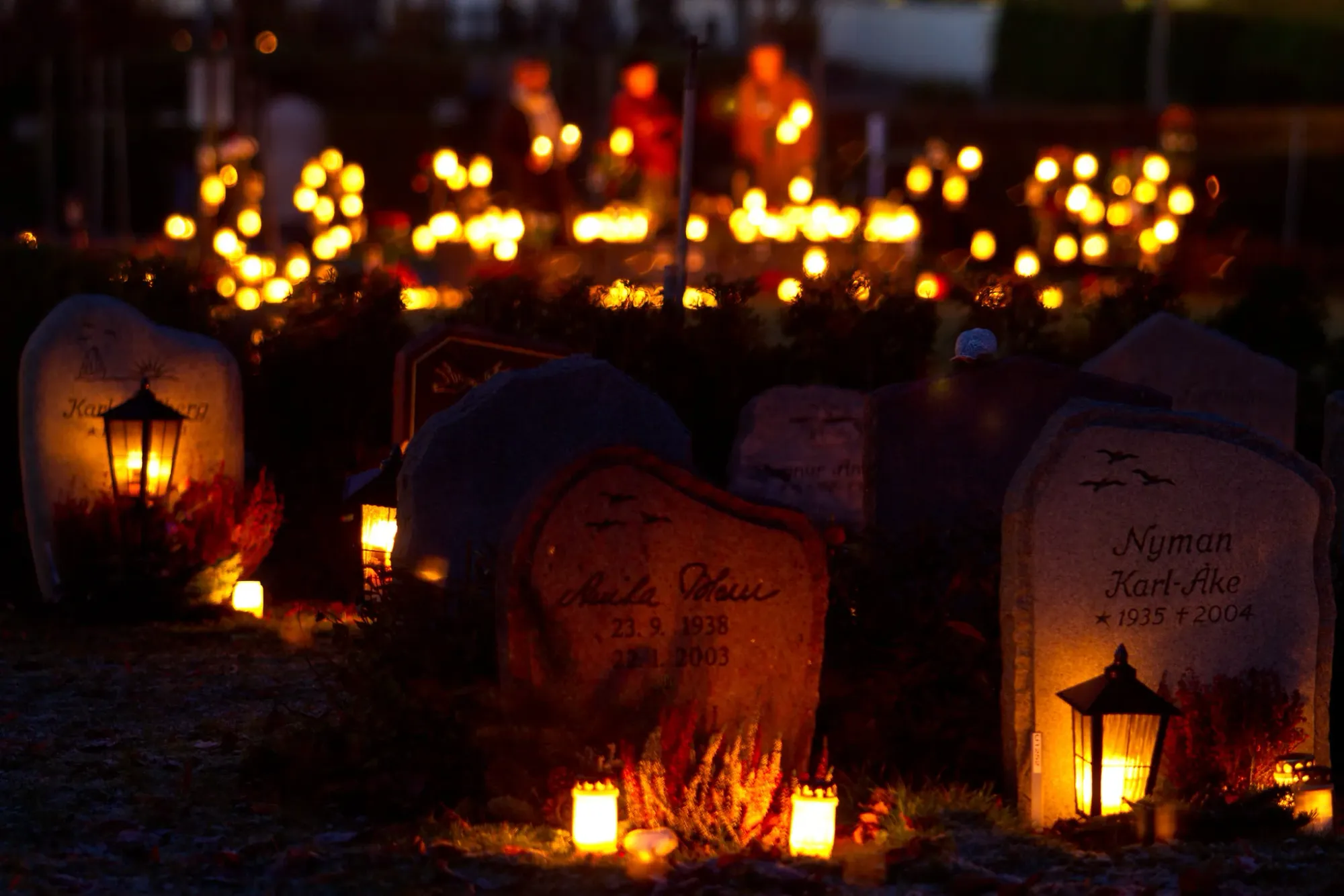
A Christian Holiday?
Bradbury erased the Christian component of Halloween completely, which is shocking given that even the name of the holiday derives from the Catholic feast. The celebration is in fact a triduum—three consecutive days—comprising All Hallows’ Eve (Halloween), All Saints’ Day (sometimes called All Hallows’ Day or Hallowmas), and All Souls’ Day. Together they form the liturgical period of Allhallowtide.
We tend to reflexively believe now that Halloween is some kind of pagan or devilish holiday that is at odds with Christianity, but the historical record is not so clear as that. Some argue that there is overlap in Celtic lands with All Hallows’ Eve and the pagan Samhain, and there is certainly some crossover. But to just collapse one into the other—and dismiss Christian Halloween as simply an adoption of a pagan holiday for missionary purposes—is to commit the genetic fallacy. Nothing is that simple. Just because Christmas is at the same time as the Winter Solstice (and, of course, we don’t actually know what day Christ was born) does not mean it is simply at root an inauthentic pagan celebration. Same with Halloween and Samhain (and Samhain has its history too; evolution is a part of tradition).
The commemoration of “all souls” exists in the Christian world outside its encounter with Celtic paganism, after all. In Eastern Orthodoxy, the Saturday of Souls is the week after Pentecost. It was in the western Catholic world that this feast was moved to the beginning of November (making Halloween October 31) in the “dark” ages. Later centuries saw the emergence of distinctly Halloweenish traditions of “souling” and “guising” that might plausibly be the source of trick-or-treating and costuming that we know today.
Even if it is somewhat syncretistic, that isn’t something to be feared. Christianity has always assumed into itself ideas, practices, and even truths of the pagan world—it has never existed in a vacuum. That the Logos Christology of John 1:1 seems to lay out a platonic cosmology, mediated into Judaism by figures like Philo of Alexandria, does not invalidate it. “Testing all things and holding fast to what is good” is, in the end, a common practice and good advice. The pagan components have been drained of their power the same way the ancient gods have been banished into the outer dark.
(And, really, the obviously devilish elements of modern Halloween are so blatant it’s easy to just avoid it, if one were so concerned; Christmas is a far more insidious example, where the latent anti-Christian impulses of the contemporary iteration of the holiday—which mostly functions now as an hedonistic celebration of capitalist consumerism, complete with a mythic iconography fabricated largely by Coca-Cola—have become so second-nature that we overlook our obeisance to Mammon).
Nevertheless, where I grew up, there was a lot of anxiety about Halloween and satanism, and so many evangelicals in the area embraced an alternative, the “Hell Houses.”
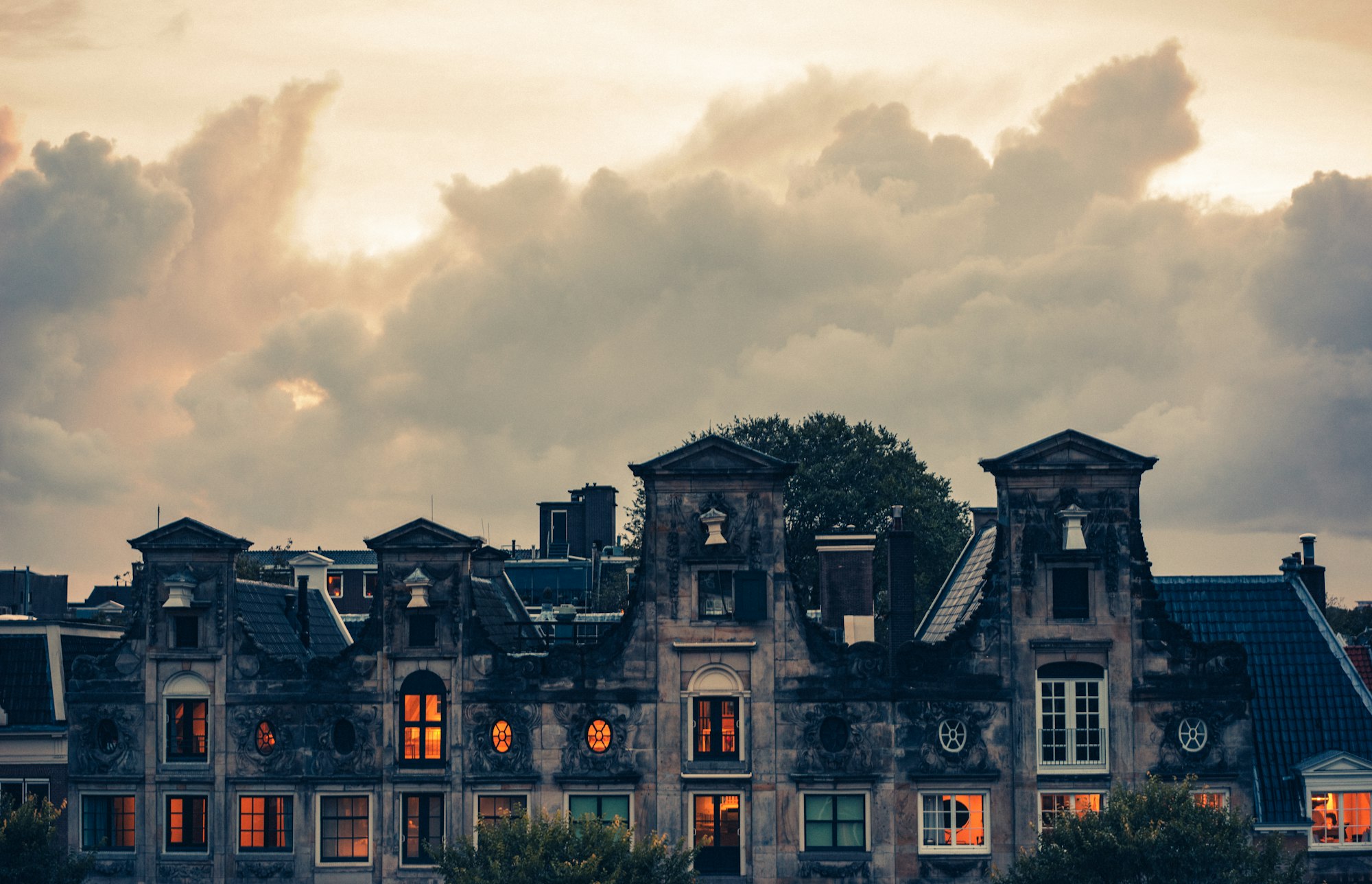
Hell Houses
I am fortunate to have never been to one of these things. I know people who have, and they have found them scarring for life.
The gist is that, rather than a traditional haunted house on a suburban Halloween street, complete with witches and mummies and cauldrons, (some) evangelical Christians would create a frightening commentary on contemporary politics married with a threat of eternal hellfire. Looking like a haunted house, they would instead present a social and religious message. One of the first Hell Houses was created by Jerry Falwell in the 70s, but they didn’t take off until one in Arvada, Colorado, became popular in the 1990s.
I confess I can get a little irritated with the whole “ex-vangelical” trend, where people who grew up in evangelical settings adopt an attitude of total disdain and even hatred for their religious upbringing (whether they become Christians of another denomination or, more commonly, atheists of varying confidence). For the most part I think positively of it, and I recognize that had I grown up Orthodox, I would not have anything like the biblical literacy I received from my evangelical education. But when it comes to the Hell Houses I understand and sympathize with the rage the ex-vangelicals often display.
(Fortunately, as far as I know, my school and church never did this—we had an ordinary Halloween alternative called the “Harvest Festival” which was always rather fun; no attempts to scare people into the fold with visceral visuals that would make Eli Roth blush).
Not only do the Hell Houses often depict the most ghastly and gruesome elements of real-world horror—school shootings, drug addiction, sexual assault, you name it—they also, whatever the proprietors say otherwise, merge it with a bleak, nihilistic rejection of hope. Supposedly, the point of many of the Hell Houses is a kind of altar call: a plea to become a Christian and find Jesus, the only pathway to mending a broken world. But mortifying children into terrified obedience—which is the main tactic here—is not only not likely to persuade anyone of one of Christianity’s central dogmas: that God is a God of infinite love.
What if a kid with deceased and nonreligious relatives wanders in? The hopeful and loving message they’ll receive from this ministry is that their loved ones—their grandparents, aunts, uncles, even perhaps parents and siblings—are burning for all eternity because of possibly being born at the wrong place and wrong time. I was told at one point that my Orthodox extended family were not really Christians, so I could have easily found myself in this scenario. All it will do is create an emotionally devastated ex-vangelical at a later date, whose central goal in life will be to try to unlearn this idea.
The practices of Allhallowtide, especially of praying for the dead, convey such a starkly different message and religious outlook. Those of us with evangelical backgrounds tend to be uncomfortable with this, but prayers for the dead have a long history in Christianity. In Catholicism this obviously suggests Purgatory, but in Orthodoxy the practice is common despite not sharing that belief. One finds it liberally scattered throughout the liturgy all year, and it is referenced in the writings of saints and Church Fathers ranging from St. Augustine (who prays for his reposed mother St. Monica at the end of The Confessions) to St. Basil the Great. It shows up in Protestantism, too, as with the Methodist founder John Wesley (which makes sense, since he derived a lot of his theology from reading the Greek Church Fathers).
As Philip Sherrard wrote, the Orthodox conception of the afterlife is that “even the soul in deepest hell still has the capacity to get out of it, is still capable of changing its mind/life (metanoia)…This is why the Orthodox pray for the dead—all the dead.” One finds similar hope in George MacDonald, who likewise renounced belief in eternal hell and nearly got C.S. Lewis to do the same (alas, not quite—though some recently discovered letters indicate Lewis was deeply drawn to the idea; he even bluntly admitted that St. Paul was a universalist).
The porous boundaries between living and dead that characterize Halloween have roots in these Christian practices. And I find it telling that this message of hope, in Halloween, is countered by a message of hopelessness in the Hell Houses.
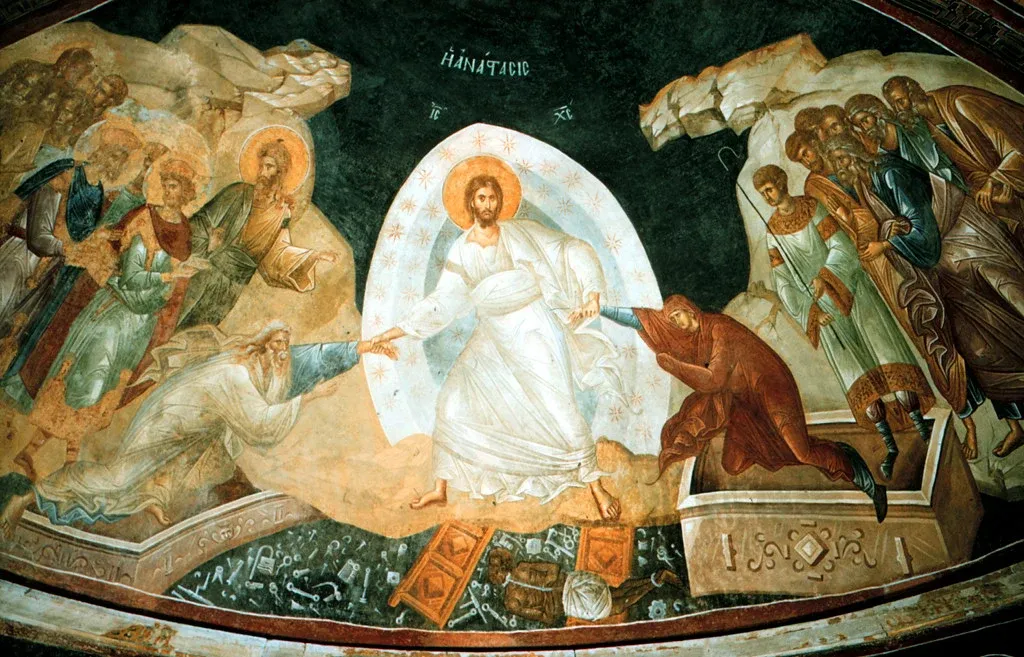
Bradbury and the Search for Christ
I have gotten away from Bradbury, but I believe he has something to say here, too.
In his short story “The Man,” Bradbury tells the tale of astronauts who land on another world—near a small town with human beings just like us. But the townsfolk are utterly unperturbed by the presence of people from another planet. The captain, Hart, is stupendously annoyed. This is the greatest event in history—why does no one care?
Well, not quite. Because there’s one thing more important in history than First Contact, and it just happened. Jesus Christ, it is learned, had just visited this planet. And now, nothing that happens after could have the same import ever again.
Consumed with a desire to meet the Messiah in person, Hart believes the mayor is hiding His location. He pulls a gun and threatens him to reveal where He is hiding, but the mayor says he can’t say where He is even if he wanted to. Hart shoots him (though the mayor survives). But Hart is undaunted—he will continue his search, he will go to every planet, he will get closer and closer, by weeks, by days, by minutes, by seconds, until eventually he finds Him. As Hart blasts off into space, the reader learns that Jesus is still on the same planet after all, and the rest of the crew stay behind to live in the bliss of His presence.
Bradbury was a man of eccentric religious beliefs himself, but I have always taken this to be his commentary of the inability of religion—especially Christianity—to properly grow through violence, intimidation, and fear. Hart attempts to strong-arm people into finding Christ, and it just doesn’t work. No matter what he does, no matter where he goes, he will always miss Him.
But there is still some hope for Captain Hart. “Each finds him in his own way,” the mayor says about the search for Christ. One day, perhaps in the far future, Hart will come around.
And, turning back to Halloween and The Halloween Tree, there is a poignant conversation with Mr. Moundshroud after Pipkin is abducted. The boys are concerned—was it Death himself that arrived? Did Death take Pipkin and run? “Borrowed is more like it,” says Moundshroud, “perhaps to hold him for ransom.” “Can Death do that?” the boys ask. “Sometimes yes,” admits Moundshroud.
The ancient Church believed that Death and Hades could and did take humanity captive. But the ransom theory of atonement, and its correlate the Christus Victor, teach that this ransom was a bait-and-switch, and death’s power was broken, Hades bonds shattered, Hell destroyed. The well-attested Christian tradition of Christ’s descend into Hell during the three days of His death testify to this, and it manifests in the liturgy with staggering frequency. Just as the boys in The Halloween Tree journey through time, all the way to the beginning of history, in their search for lost Pipkin, so the icons of the Descent depict Christ voyaging into darkness to the very beginning of creation, where He finds Adam and Eve and pulls them out of the grave and into the light of salvation.
The message of Halloween, of Allhallowtide, of The Halloween Tree, of the Orthodox liturgy, is that no one is beyond the hope of rescue. Not even a Hell House can stand in the way of God's will to “have all men to be saved, and to come unto the knowledge of the truth” (1 Timothy 2:4).
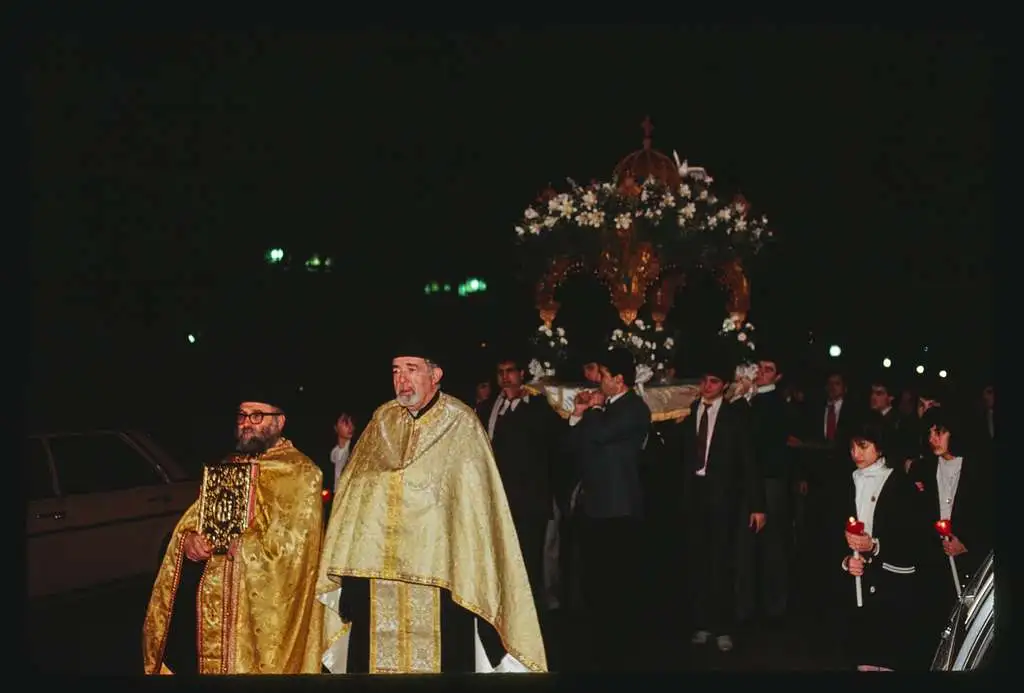
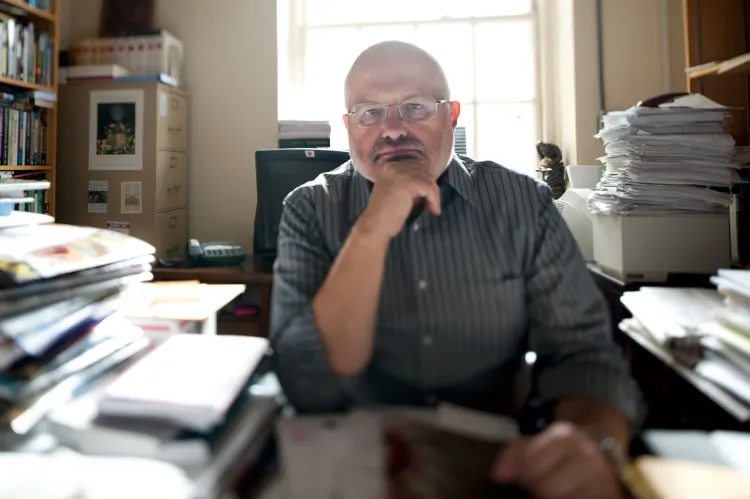
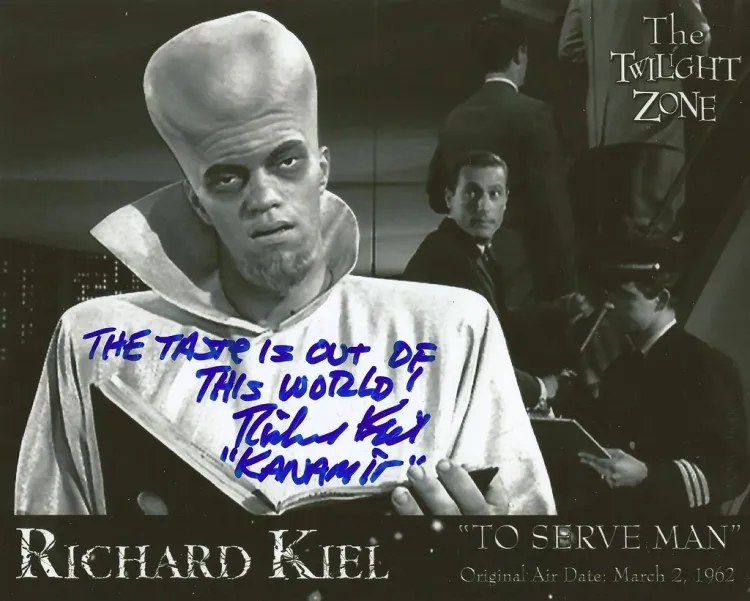
Member discussion